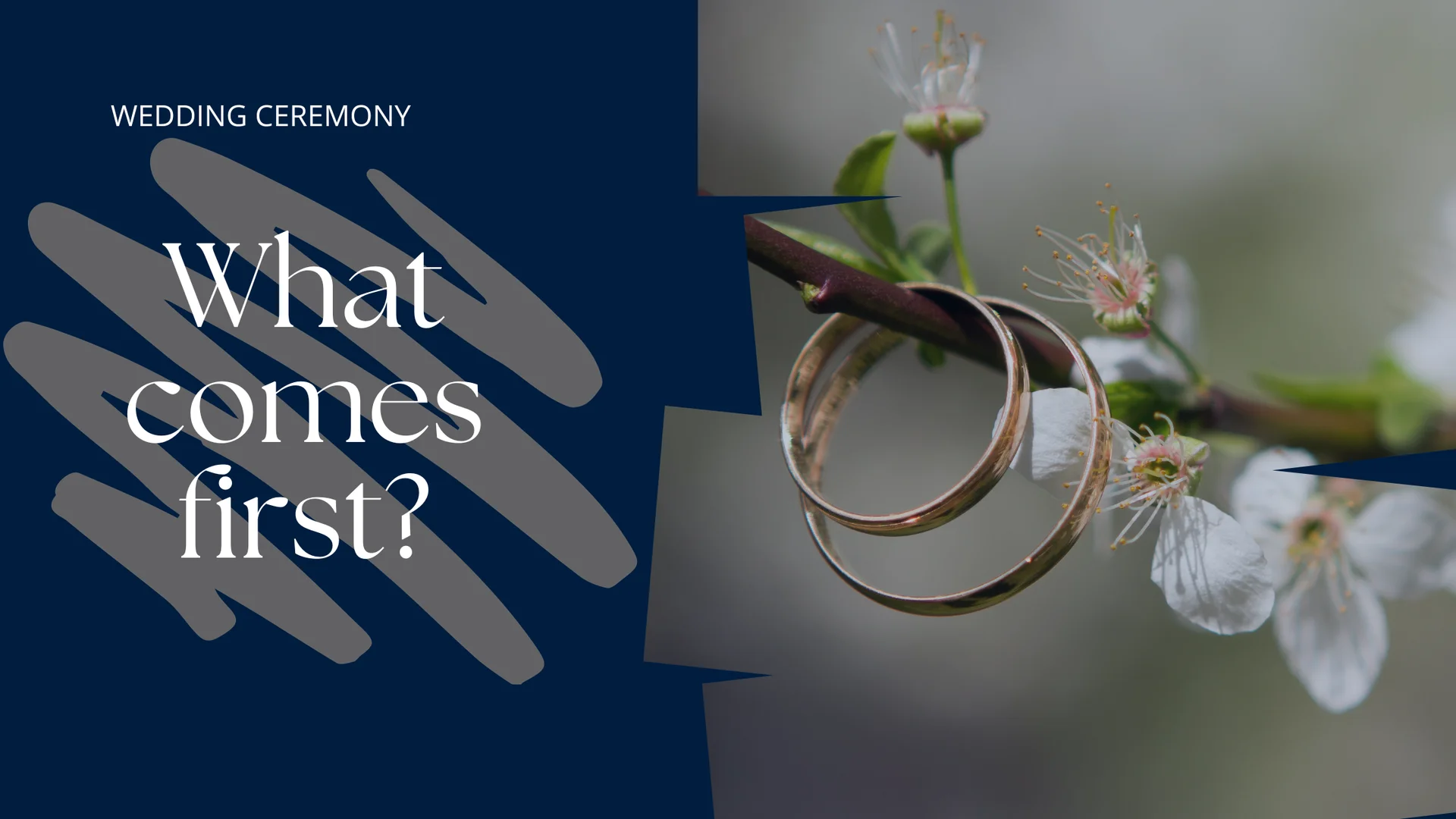Wedding Ceremony Order of Events
If you are planning your wedding, you might be wondering what is the order of events for your ceremony. There is no one right answer, as different cultures and traditions may have different ways of organizing the ceremony.
However, there are some common elements that most weddings share, and knowing them can help you create a smooth and meaningful ceremony for you and your guests.
Here is a general outline of a typical wedding ceremony order, with some explanations and variations for each part.
- The Processional
This is when the wedding party and the couple enter the ceremony site, usually accompanied by music. The processional can start with the officiant, followed by the groom and the best man, or they can enter from the side.
Then, the bridesmaids and groomsmen walk down the aisle in pairs, followed by the maid of honor and the ring bearer. The flower girl (or girls) may walk before or after the ring bearer, scattering petals along the way. Finally, the bride makes her grand entrance, escorted by her father or another person of her choice. The processional ends when everyone reaches their places at the front of the site.
Some variations: In some cultures, both parents escort the bride and groom down the aisle. In some Jewish weddings, the grandparents of the couple are also included in the processional. In some Christian weddings, the groom’s parents and then the bride’s parents walk down the aisle before the wedding party.
- The Welcome
This is when the officiant greets everyone and introduces the purpose of the ceremony. The welcome may include a brief statement of why the couple has chosen to get married, what marriage means to them, or how they met and fell in love. The welcome may also include a prayer, a blessing, or a reading that reflects the couple’s beliefs and values.
Some variations: In some religious ceremonies, the welcome may include a ritual such as lighting a candle, pouring water, or breaking a glass. In some secular ceremonies, the welcome may include a poem, a song, or a personal anecdote that relates to the couple’s relationship.
- The Exchange of Vows
This is when the couple declares their love and commitment to each other in front of their witnesses. The vows may be written by the couple themselves or chosen from a traditional or religious source. The vows may be recited by the couple together or separately, or repeated after the officiant. The vows may also include promises or pledges that reflect the couple’s hopes and expectations for their marriage.
Some variations: In some cultures, the exchange of vows may be preceded or followed by a ritual such as tying a knot, exchanging garlands, or jumping over a broom. In some weddings, the couple may also ask their guests to affirm their support and blessing for their marriage.
- The Exchange of Rings
This is when the couple gives each other a symbol of their union and fidelity in the form of rings. The rings may be carried by
the ring bearer or held by the best man and maid of honor until this moment. The officiant may bless or explain the meaning of
the rings before handing them to the couple. The couple may then place the rings on each other’s fingers while saying words such as “I give you this ring as a sign of my love and faithfulness” or “With this ring I thee wed”.
Some variations: In some cultures, other items such as necklaces, bracelets, or coins may be exchanged instead of or in addition to rings. In some weddings, the couple may also engrave or inscribe their names or initials on their rings.
- The Pronouncement
This is when the officiant declares that the couple is now legally married and invites them to seal their union with a kiss.
The pronouncement may include words such as “By the power vested in me by…” or “According to the laws of…” or “In
the presence of God and these witnesses…”. The pronouncement may also include a congratulatory remark such as “You may now kiss
the bride” or “I present to you Mr. and Mrs…”.
Some variations: In some cultures, the pronouncement may be accompanied by a ritual such as throwing confetti,
blowing bubbles, or ringing bells. In some weddings, the couple may also introduce themselves with their new names or titles.
- The Recessional
This is when the couple and their wedding party exit the ceremony site, usually accompanied by music. The recessional usually follows
the reverse order of the processional, with the bride and groom leading the way, followed by their wedding




